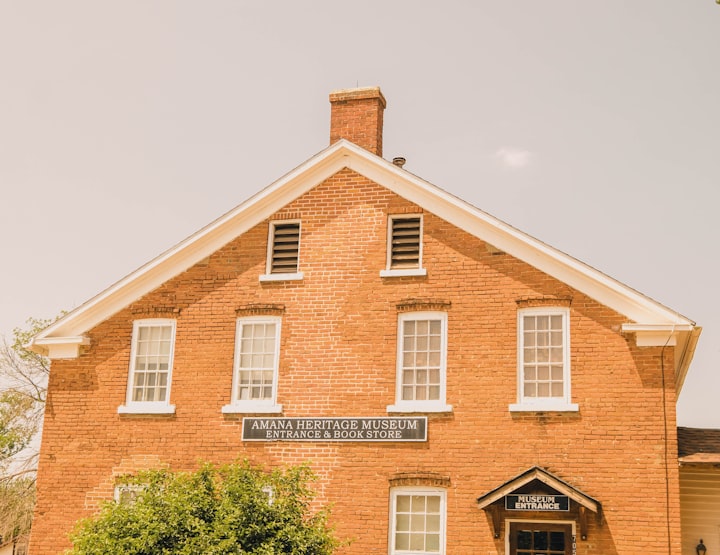Iowa, Amana Colonies: Traveling in the Present and Learning About the Past
Understand the history to appreciate the community
Our visit to The Amana Colonies required we learn the historical and cultural background of the settlers for full appreciation. Until we gathered some knowledge, we only possessed a naïve comprehension of the dedication of the early residents.
The community began in Germany in 1714 and was known as the Community of True Inspiration. Though their desire was to live in peace, these individuals were persecuted for what they believed as is so often true when understanding is limited. As a group they migrated to central Germany.
Seeking freedom, many of this community sailed to America in 1843 and lived in New York. In 1855, Iowa tempted them with lower priced land, natural resources, and fertile soil. Upon arrival they settled the area and over time, 7 colonies were established. Residents of each village were given housing, food, medical care, and all the necessities to meet their basic needs in exchange for work and a dedication to the beliefs of the community.
While visiting Amana, we read, discussed, and participated in tours explaining the way of life at the beginning of the settlement and learned how it developed and changed with outside influences. In 1932 The Great Change dissolved much of the communal way of life and The Amana Society was established.
We stayed and explored the villages for 3 days. In this short post, it is not possible to expound on the complete philosophy of the residents so instead, I will highlight what we saw and enjoyed.
The villages are very similar but over the years Amana has developed into a tourist town with busy streets and activities. There are no large chain stores. Commercial buildings were once homes that have been renovated and now usually specialize in one craft: quilts, chocolate, rocks, woodworking, beer, clothes, baskets, ice cream, etc. Prices reflect the high quality of the merchandise and the fact that much is handmade on site.
To begin a tour of the colonies, it is strongly suggested to spend time in the Heritage Museum in downtown Amana and watch a 22 minute video that provides an overview of the traditions. Then explore the exhibits to witness artifacts of a past life.
The adjacent colonies have remained mostly residential but include museums that exhibit displays. The General Store in High Amana was built of sandstone. A customer can purchase items made by the residents, some imported from Germany, and many unique gifts for the home and garden. The original shelves and cabinets are filled with items for sale and some for display only.
Of special interest to me was the communal kitchens where the meals for all the residents were prepared and served. Everything was made by the people of Amana. As seen in the picture below that includes the wood cook stove, pots, pans, and utensils.

Following the mandates of the lifestyle, a few fulfilled the task of meal prep while others completed their assigned tasks. Each person, young and old, served a role, and all were considered equal. Below is a sample menu for a week's worth of communal meals.

True to the time period before the industrial revolution, daily tasks required hard work, sweat and resulted in callused hands. The picture below shows a washtub used for clothes. Once a week water was heated over a wood fire to clean soiled clothes using handmade soaps made by other villagers. Ironing consisted of a metal plate (as seen on the front ledge of the water basin) being heated on the stove and used to press.

Other museums welcome visitors to observe how tasks were accomplished prior to modern technology. We visited a cooper shop, woolen mills, wood working store, and other exhibits showing how tasks necessary to life were completed. Printed documents, notices, brochures, news, and signs were printed using the laborious process of arranging each letter of the communication in a line, coated it with ink, and rolled onto paper. Mass production had not been invented.

Experience the authentic food when visiting Amana or try one of these recipes.
Communal Meals and Great German Recipes
Follow us as we travel from Idaho to Maine and home again. All stories are posted on RVing in Retirement or you can subscribe to our publication.
Amana Colonies RV Park is a Passport American campground. They offer a 50% savings on a two night with this membership. Learn more about Passport America by clicking on this hyperlink.
Passport America Saves Money on the Road
About the Creator
Brenda Mahler
Travel
Writing Lessons
Memoirs
Poetry
Books AVAILABLE ON AMAZON.
* Lockers Speak: Voices from America's Youth
* Understanding the Power Not Yet shares Kari’s story following a stroke at 33.
* Live a Satisfying Life By Doing it Doggy Style explains how humans can life to the fullest.







Comments
There are no comments for this story
Be the first to respond and start the conversation.